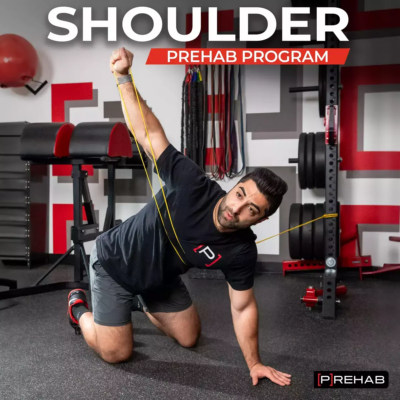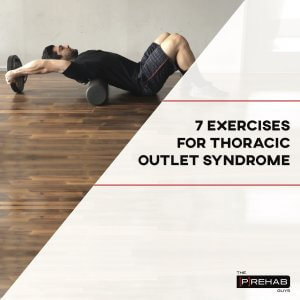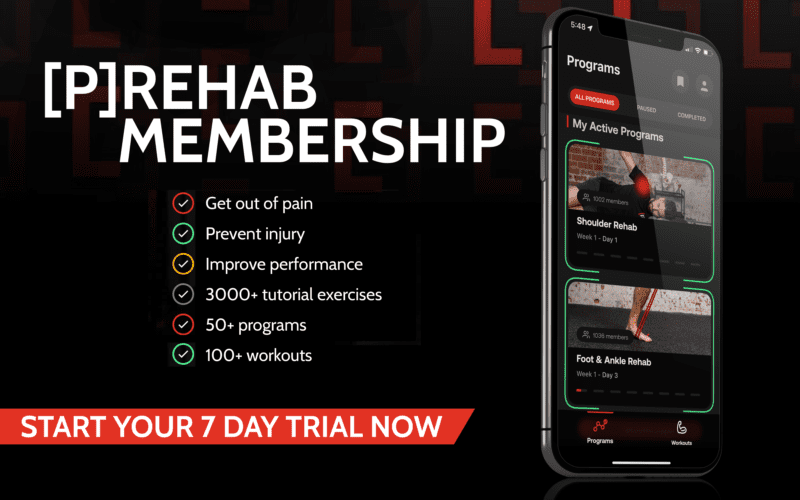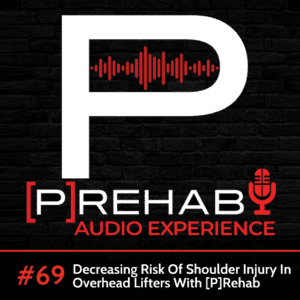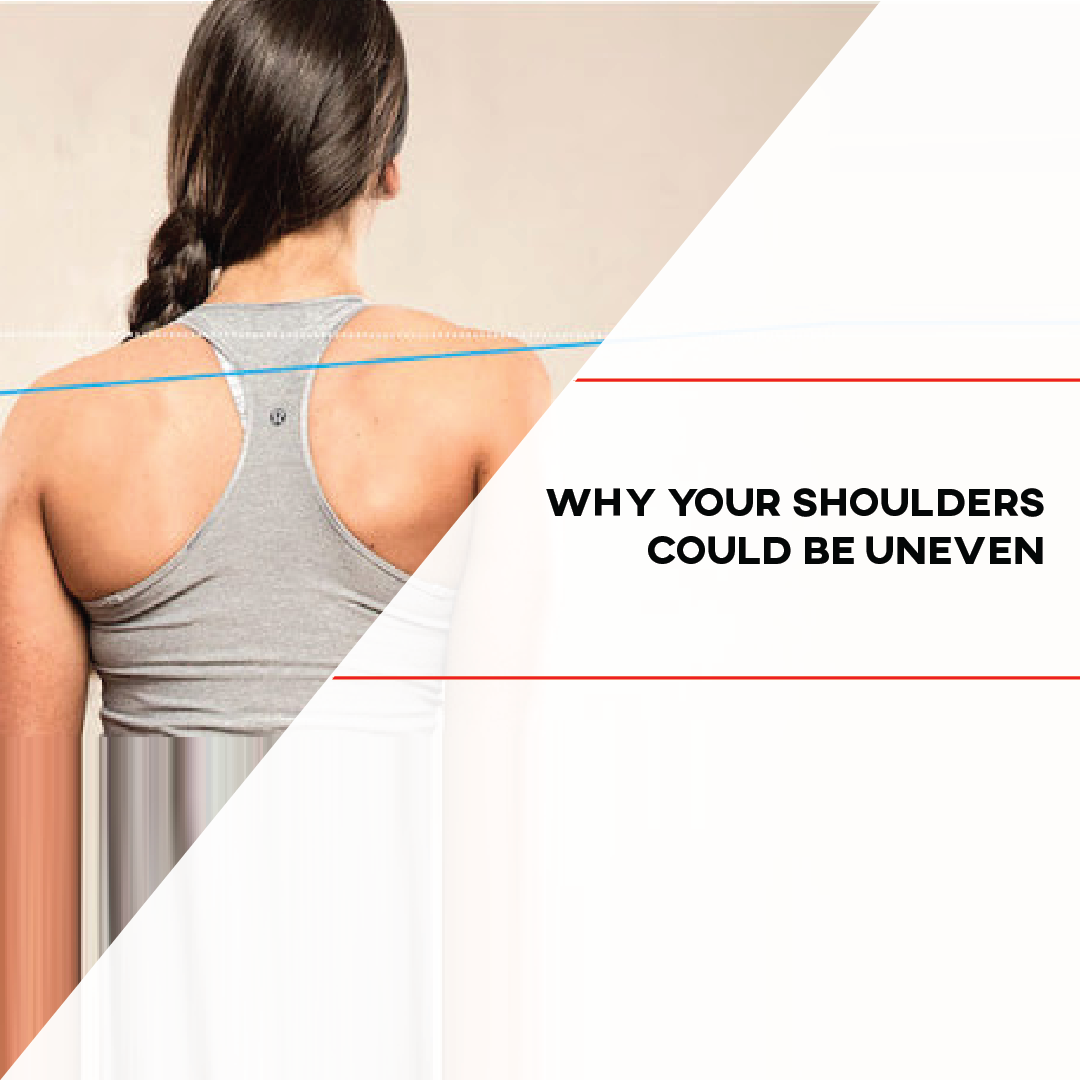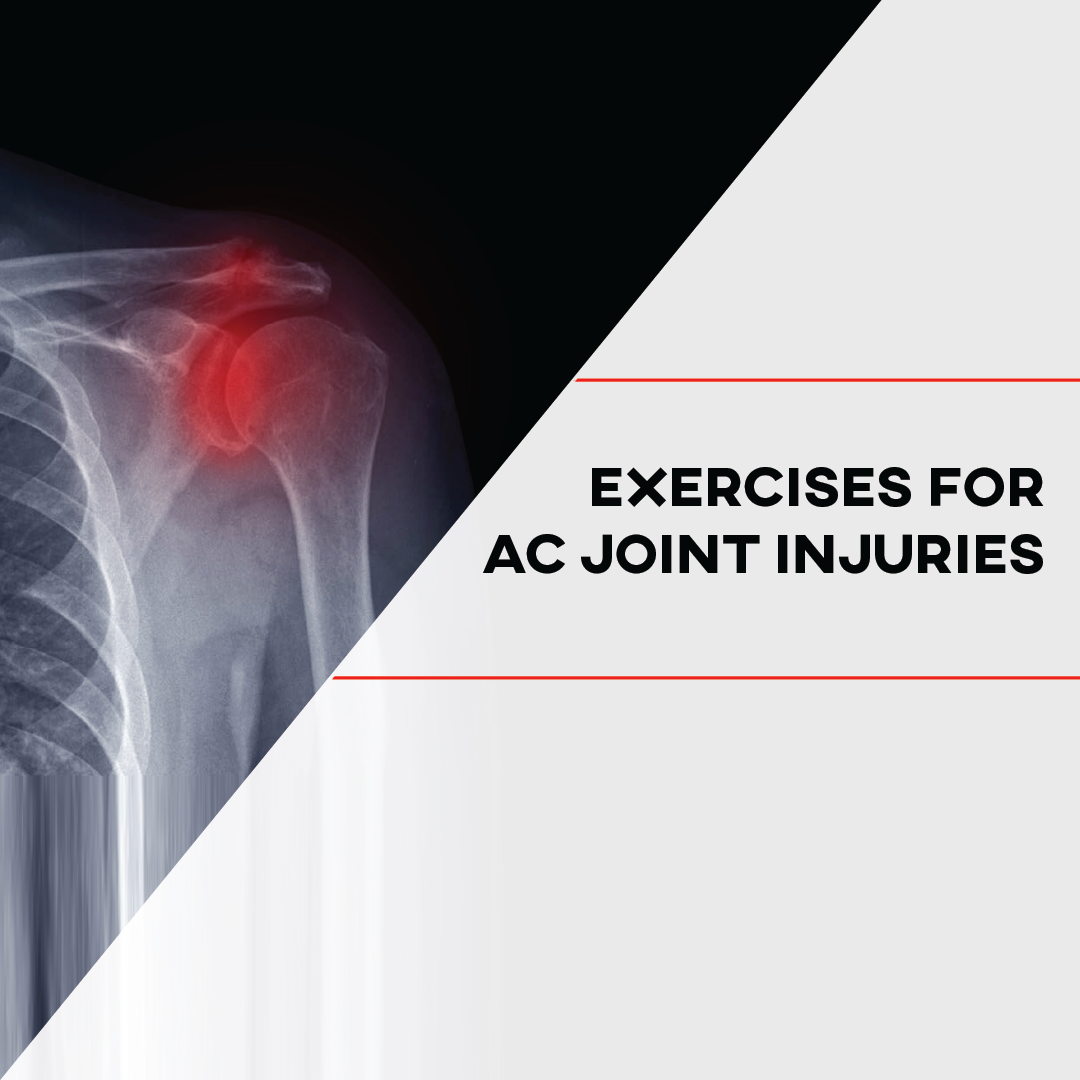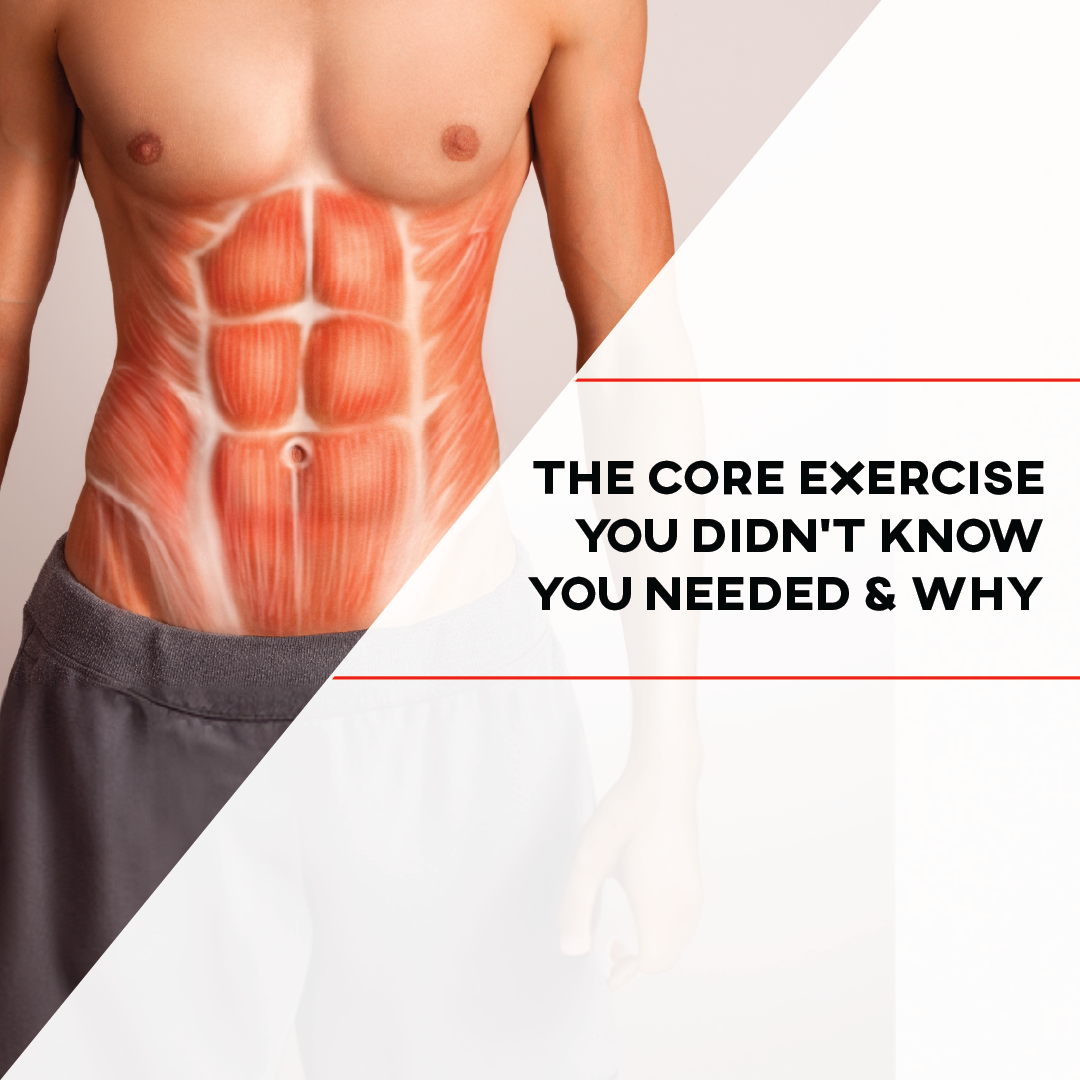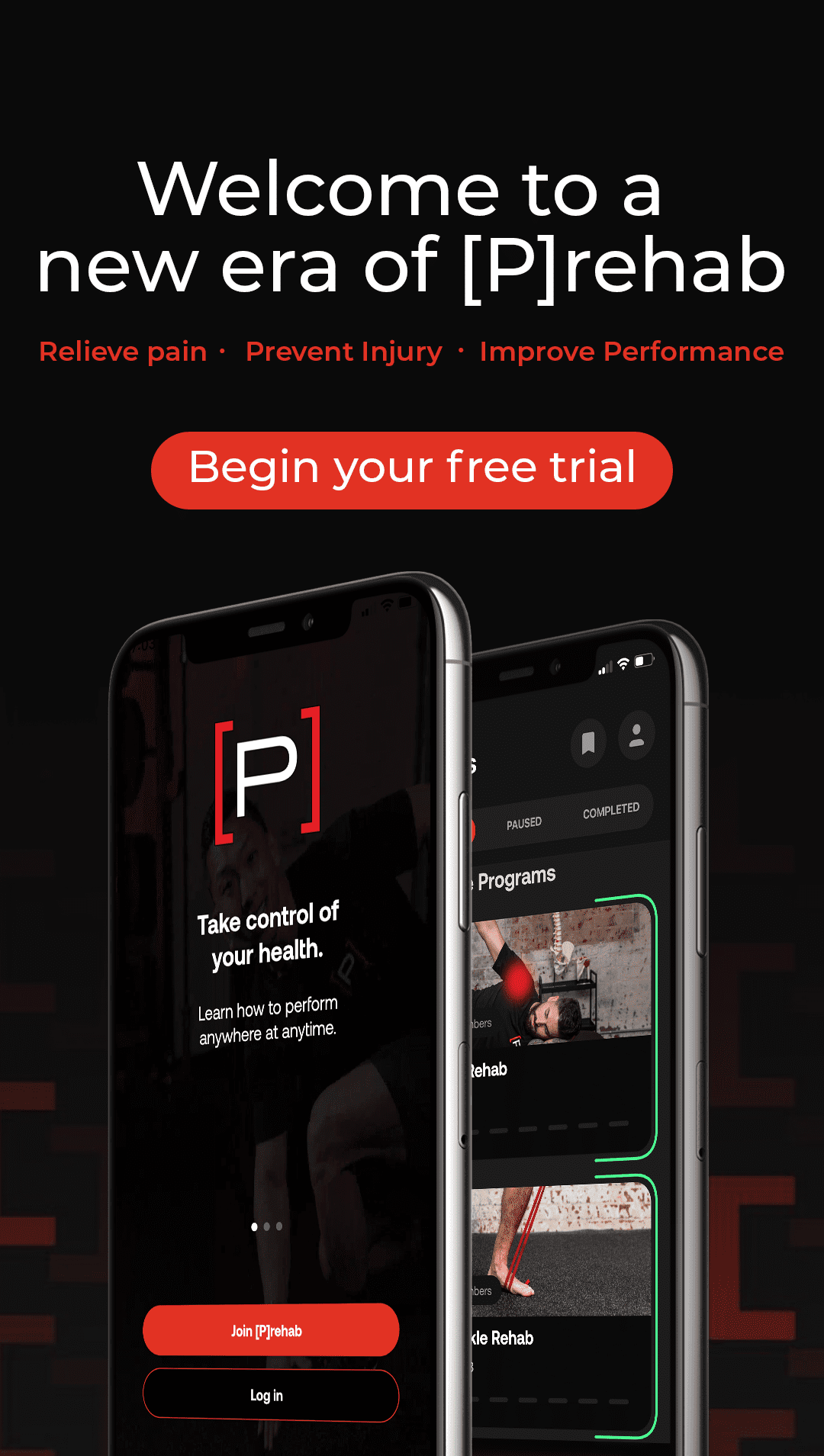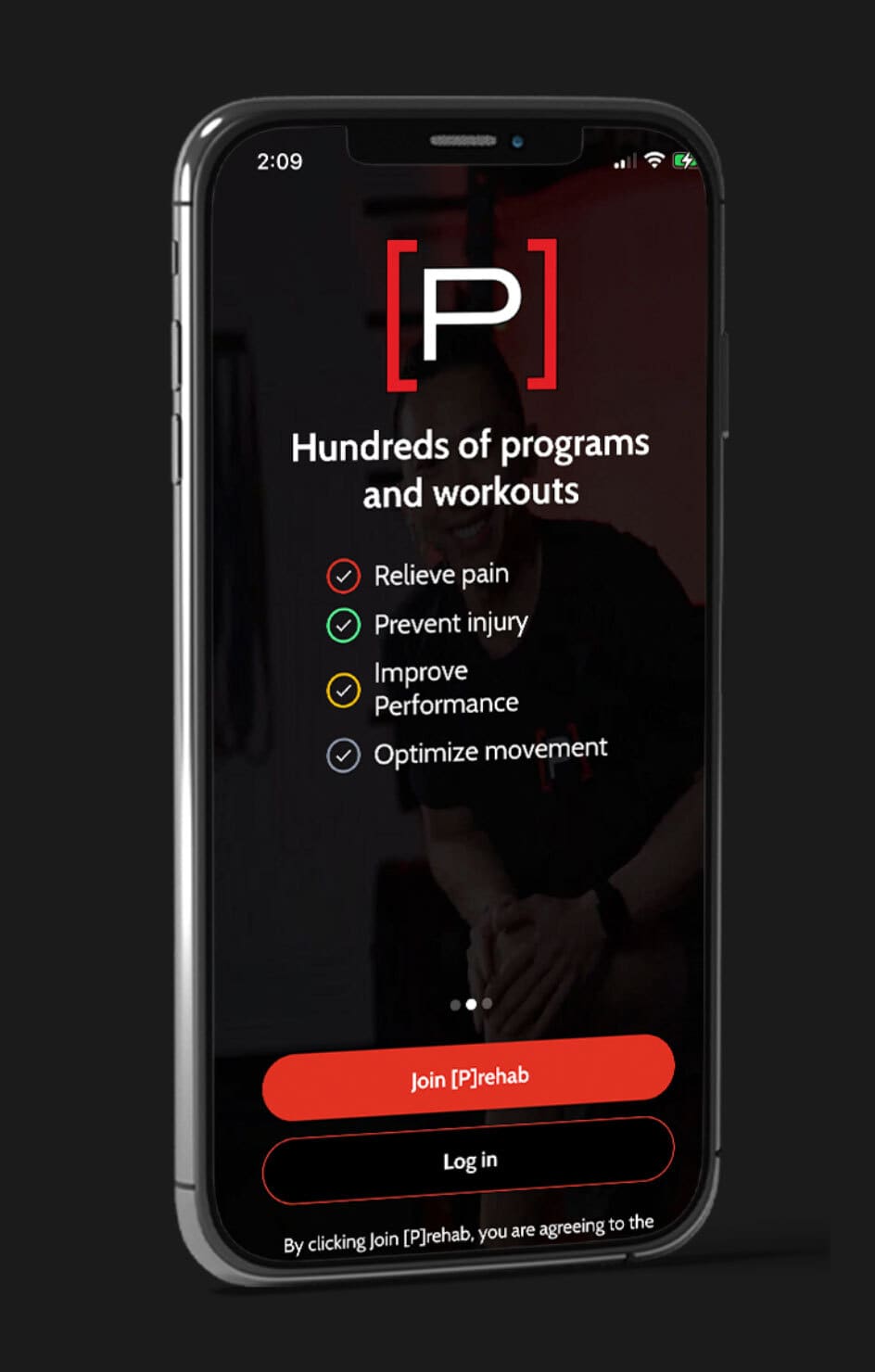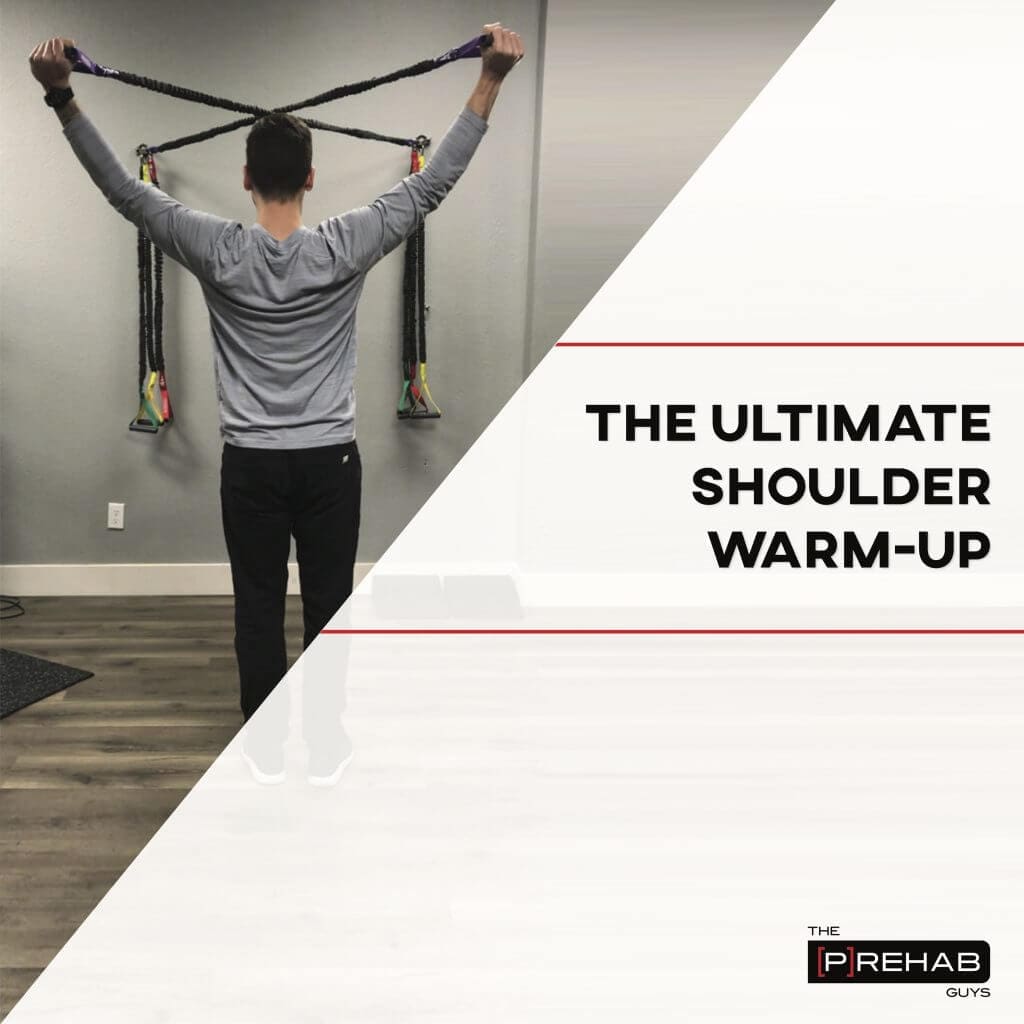
Healthy shoulders are essential to participating in life, exercise, and recreational activities without pain or restrictions. However, healthy shoulders require maintenance and attention. Below you learn the ultimate shoulder warm-up before lifting, which includes some of our favorite mobility drills, stretches, and exercises that should be a part of everyone’s shoulder maintenance.
What Does A Shoulder Warm Up Before Lifting Routine Look Like?
Great question! To keep it simple, we want to ensure mobility in the right places, flexibility in specific muscles, and achieve stability in the right places with activation drills! Below we hit all of these and more in an ideal order that we typically recommend in our programming. This is just a taste of what’s included in our shoulder [P]Rehab programs, which we highlight below!
Mobility: T-spine Foam Rolling
Foam rolling your T-spine is a must in the ultimate shoulder warm-up before lifting. Think of the T-spine region serving as the foundation to the shoulder along with the scapula.
1️⃣ Place the foam roller perpendicular to your spine onto a segment which you want to work on, then work your way up from the bottom to top
2️⃣ While grabbing onto a stick/pipe, elevate your arms as far back as you can in an attempt to touch the floor. This movement is very similar to a wall angel. You can also just use your hands/arms without a stick
3️⃣ Spend a few repetitions on each segment-then move up toward the next.
❌ Don’t allow your butt to come off the floor or your ribs from flaring out this is typically due to compensation from your low back!
✅ A more aggressive way to perform this exercise is by using an external load of a weight as shown here. This will make the stretch more passive and less active, this is reserved for the few
Spend 30-60s max performing this mobility drill
Learn More Shoulder [P]Rehab Exercises To Include In Your Warm-up Routine!
This program is for anyone looking to bulletproof their shoulders for life! Whether you’re an average Joe, fit Fiona, weekend warrior, athlete, or superhero parent, you can benefit from this program. We make it easy and teach you how to strengthen your shoulders and keep them healthy for anything life throws at you. Learn more here!
Mobility: Lats & Teres Major Foam Rolling
Sample Shoulder [P]rehab Program Exercise
Addressing the lats and posterior/inferior shoulder musculature is just as important with your shoulder warm-up before lifting. Follow the instructions below…
1️⃣ Place the foam roller perpendicular to your body while laying on your side. Get the foam roller set up under your shoulder just on the edge of your shoulder blade.
2️⃣ Start by rolling your body forward and backward along the muscles followed by pinning down a sore/tight area and lifting your arm off the ground with your thumb pointing towards the ceiling
3️⃣ Spend a few repetitions in a certain area and then move above/below
Spend 30-60s max performing this mobility drill
READ: EXERCISES FOR THORACIC OUTLET SYNDROME
Learn To Assess and Improve Your Overhead Shoulder Mobility!
Improving Flexibility Before Lifting
Pec Stretch
Opening up the pecs after working the t-spine and lats is the next step in the shoulder warm-up before lifting.
1️⃣ Pectoralis major stretch- abduct and externally rotate your shoulder onto a stable surface. Rotate until you feel a good stretch in the chest and hold, then contract the chest (by pushing against the wall) for a couple of seconds followed by rotating your body further away from the doorway to hold again. Then repeat. *you should not feel the stretch going down into your forearm/hand. If this occurs, you are getting neural tension and should modify the stretch.
2️⃣ Pectoralis minor- you can use the same contract-relax technique here as well. The same rules apply do not feel a stretch or pulling sensation into your hand/fingers
Perform 3-5 repetitions of each stretch and be sure to make it dynamic spending <30s
The Prehab membership is the anti-barrier solution to keeping your body healthy. Access state-of-the-art physical therapy, fitness programs, and workouts online in the comforts of your own home or gym! Taking control of your health with exercise & education from the palm of your hand has never been easier. Get access to 50+ programs, 100+ unique workouts, and 3000+ exercises to build your own workout routines. Trial it for free, and learn how to get out of pain, avoid injury, and optimize your health with [P]rehab!
Active Lat Stretch
Sample Shoulder [P]rehab Program Exercise
Raise your hands high if you have tight lats! 💁♂️Tried stretching? Foam Rolling? Cupping? IASTM? And nothing seems to work? You’re not alone! When it comes to gaining active range of motion that you can use, many times you need to follow up your stretching and passive treatments with active mobility. Be sure to add this to your shoulder warm-up before lifting.
Keys to the exercise:
✅ Back and shoulders MUST stay against the wall
✅ Don’t arch your back
✅ You must keep your elbows touching the WHOLE time
✅ To increase the stretch, try and separate your hands – while keeping your elbows together! Note: this stretch is more than likely hitting the teres major as well, which is not a bad thing! I have also seen this performed lying down on a foam roller, which works as well!
Perform 2 sets of 6-10 repetitions
Shoulder Activation Drills Before Lifting To Promote Stability
Rotator Cuff Strengthening at Varying Degrees of Shoulder Abduction
PSA: Please do your shoulders a favor and incorporate some rotator cuff specific strengthening into your shoulder warm-up programming, even if it’s only a set every other workout!
✅ Several things to keep in mind…
1️⃣ Work the rotator cuff at varying degrees of shoulder abduction. As you raise your arm higher, you get more teres minor activation in comparison to infraspinatus activation. Both muscles are important in rotator cuff health and are far too often neglected by people performing their external rotation work at higher degrees of shoulder abduction.
2️⃣ Don’t forget to work on the subscapularis. It’s the BIGGEST of the rotator cuff muscles and is yet often neglected. While many are much more deficient in terms of external rotation strength, don’t forget internal rotation strength either.
3️⃣ Gravity works in a downward direction. If you’re performing your cuff work with a dumbbell, you need to LIE ON YOUR SIDE. Otherwise, you’re just going to look like some noob at the gym that doesn’t know what they are doing!
Perform 1 set of 5 reps of each exercise at each angle
Sharapovas
Sample Shoulder [P]rehab Program Exercise
I absolutely LOVE this exercise in my shoulder warm-up before lifting. It’s an absolute rotator cuff killer that hits the infraspinatus and teres minor both isometrically, concentrically, and eccentrically.
✅ HOW TO PERFORM:
1️⃣ Keep your elbows and hands against the wall. Maintain tension in the band the entire time. As you move one arm up (right hand for example), ensure that your left hand is anchored and doesn’t move, this will isometrically challenge your left rotator cuff.
2️⃣ As you move your right hand up, make sure to move in a curved “C” pattern. This allows you to eccentrically, and then concentrically, challenge the right rotator cuff.
I like to shoot for 3 “in and outs” per side on the way up, and then 3 more on the way down. Thats 1 rep. Shoot for 1 set of 5 reps
LISTEN: OVERHEAD STABILITY FOR FITNESS ATHLETES
SidePlank Roll To Plank
The side plank is one of Stewart McGill’s Big 3 exercises, along with the modified curl-up and the bird dog. The side plank roll to plank to opposite side plank is one of McGill’s most advanced progressions of the side plank, and MAN IS IT HARD.
The goal of the roll is the maintain a neutral spine throughout the movement. The rolling motion should occur strictly from the shoulders and hips, and there should be absolutely no spinal twisting. Mind you, this is extremely hard to do! In a study by McGill and Karpowics in 2009, they looked at this exercise performed under the guidance of a normal clinician, and then an expert clinician (my guess it’s McGill himself lol). They wanted to see if muscle activation patterns could be improved by fine-tuning exercise techniques as a result of verbal and manual cueing. With this particular exercise, they found that clinician correction significantly increased activity in both obliques and the latissimus dorsi (18% to 35% MVIC in lats). Even more importantly, torso twisting was reduced from 11 degrees to 4 degrees with corrected instruction. The main verbal cue they used was to emphasize “locking the ribcage to the pelvis” to eliminate spinal twists.
Perform 1 set of 5 reps, 1 rep being a roll side-to-side
Standing Snow Angels
Sample Shoulder [P]rehab Program Exercise
Snow Angels are a perfect way to end your shoulder warm-up before lifting! Instructions below…
1️⃣ Get bands set up in front of you anchored to a wall if possible, presented here are the Crossover Symmetry Bands that are legit. You can vary the anchor position depending on if you want more resistance with shoulder flexion (lower anchor point) or shoulder extension (higher anchor point). Note that a lower anchor point will make this exercise more challenging and easier to compensate once the hands are positioned overhead. Start out by driving your hands back towards your back pockets and squeezing your shoulder blades together. Think of pinching a pencil between your shoulder blades
2️⃣ While maintaining your hands in line with your ears ➡️ raise your arms up overhead as far as you feel comfortable with. Be sure to not shrug your shoulders up towards your ears, excessively arch your back, or lean back. Pause for a second at the top followed by bringing your hands back down and returning to the starting position
3️⃣ Now try initiating the snow angel by bringing your hands back overhead first and going through the motions backward
Perform at least 2 sets of 6-10 reps. Do not excessively fatigue your upper body, but its ok to feel a slight muscle burn.
Closing Thoughts
Ensuring that you have a proper warm-up before exercising is critical to not only enhance performance but also prevent injuries. Specifically for the shoulders, they require a large amount of assistance from the musculature and other soft tissue structures around them. If they are not warmed up properly and primed for activity, the shoulders may not have the stability they need when performing more demanding movements during resistance training. Find a routine that works best for you with the principles we have discussed in this article and stick to it!
Take Control of Your Shoulder Health!
To win an NBA championship in this current era it seems at least 3 superstars are needed on the team. Behind these 3 superstars includes the entire support staff that takes care of the day-to-day operations allowing the stars to perform. Sounds like they are using the model of the shoulder! You will learn how to create balance among the support staff which will allow the 3 joints of the shoulder to perform to their superstar abilities!
References
1. McGill and Karpowicz 2009. Exercise for Spine Stabilization.
About The Author
Craig Lindell, PT, DPT, CSCS
[P]Rehab Co-Founder & Chief Content Officer




